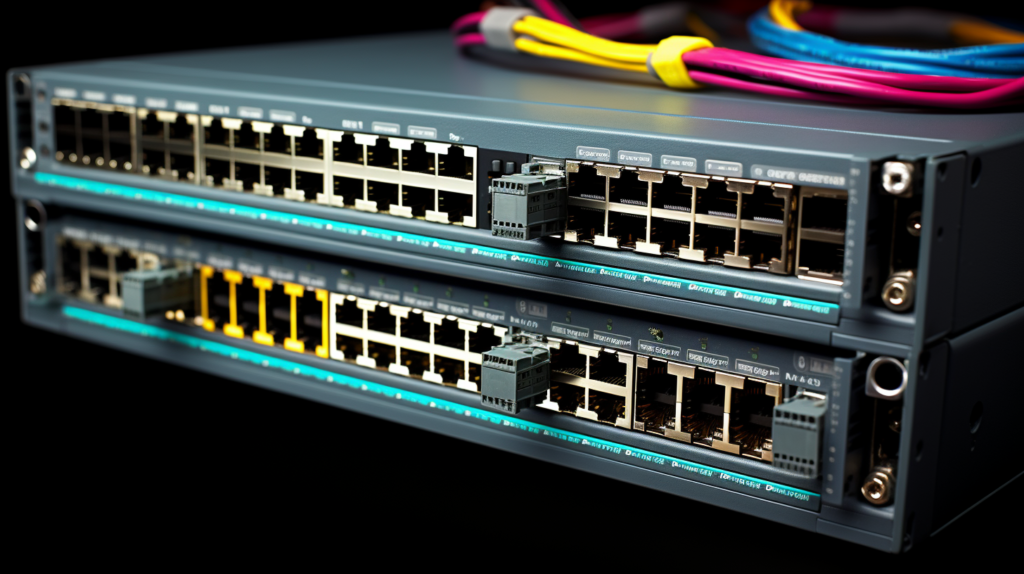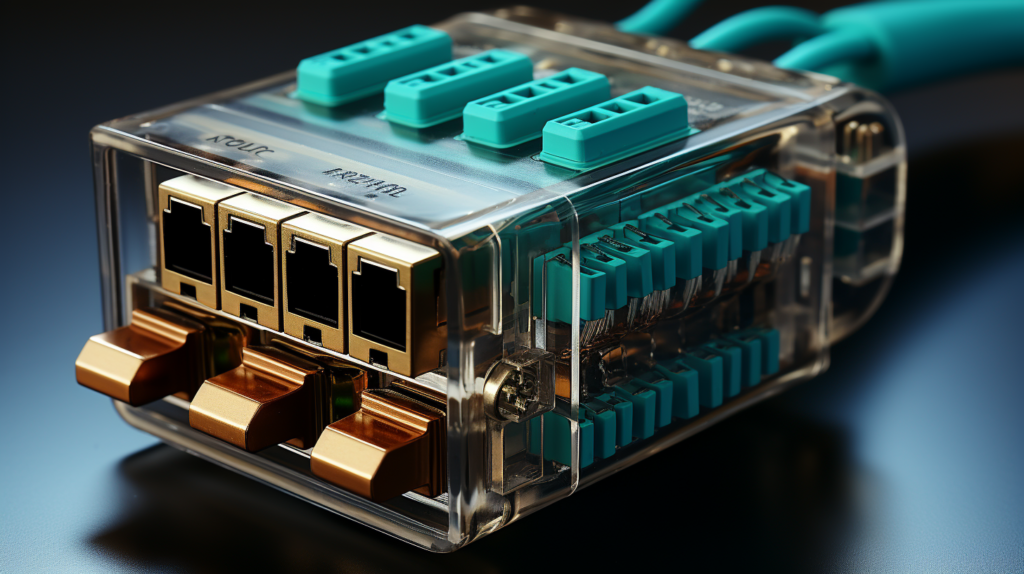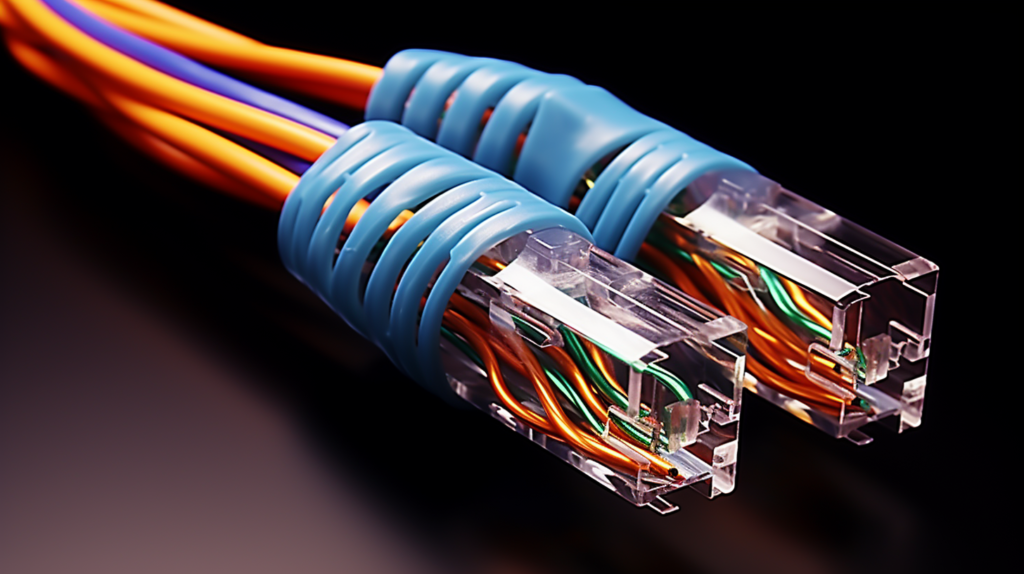Step-by-Step Guide: Configuring WLAN with WPA2-PSK Using GUI
Securing your wireless network is of utmost importance to protect sensitive data and prevent unauthorized access. Wi-Fi Protected Access 2 (WPA2) with Pre-Shared Key (PSK) is a widely used and secure authentication method for small to medium-sized networks. In this blog post, we will walk you through the process of configuring a WLAN using WPA2-PSK using the graphical user interface (GUI) of a Cisco Wireless LAN Controller (WLC). Step 1: Access the Cisco WLC GUI To begin, access the GUI of your Cisco Wireless LAN Controller. Open your web browser and enter the management IP address of the WLC in…
Demystifying AAA: Authentication, Authorization, and Accounting
In the realm of network security, Authentication, Authorization, and Accounting (AAA) are fundamental concepts that form the backbone of access control and user management. In this blog post, we will delve into each of these concepts, understand their roles, and explore how they work together to ensure a secure and accountable network environment. Authentication: Authentication is the process of verifying the identity of a user or a device attempting to access a network resource. It ensures that only authorized users gain entry into the network. Various authentication methods exist, including: Password-based authentication: The most common method, where users provide a…
Fortifying Network Security with Layer 2 Protection
Network security is a paramount concern for any organization, and implementing robust Layer 2 security features is a crucial step in safeguarding against potential threats. In this blog post, we will explore three essential Layer 2 security features: DHCP snooping, dynamic ARP inspection, and port security. We will discuss how each feature works, their configuration steps, and provide real-world examples to demonstrate their effectiveness. DHCP Snooping: DHCP snooping is a security mechanism used to prevent unauthorized DHCP servers from distributing IP addresses on the network. By enabling DHCP snooping, switches monitor DHCP traffic and build a trusted database of legitimate…
Mastering Access Control Lists (ACLs) in Network Security
Access Control Lists (ACLs) are essential tools for enhancing network security by controlling traffic flow and filtering packets based on specific criteria. In this blog post, we will explore the concepts of ACLs, understand how they work, and delve into the configuration and verification process to ensure secure network communication. What are Access Control Lists (ACLs)? Access Control Lists are a set of rules that dictate what traffic is allowed or denied at network device interfaces. ACLs are primarily used in routers and switches to filter traffic based on source and destination IP addresses, protocols, ports, or other criteria defined…
Implementing Effective Security Password Policies in Network Environments
Securing access to network devices is of utmost importance to protect against unauthorized access and potential security breaches. Passwords are a critical component of network security, and implementing robust password policies is essential to enhance overall security posture. In this blog post, we will delve into the key elements of security password policies, including password management, complexity, and alternatives such as multifactor authentication, certificates, and biometrics. Password Management Best Practices Regular Password Changes:Enforce a policy that requires users to change their passwords regularly. This practice reduces the risk of password compromise and unauthorized access. Set a suitable password expiration period…
Configuring User Authentication and Secure VTY Line Access on Cisco Devices
Network security is paramount in today's interconnected world, and protecting access to Cisco devices is a critical aspect of maintaining a secure network infrastructure. In this blog post, we will walk through the process of configuring users and passwords on a Cisco device, as well as securing access to VTY lines by requiring both a username and password. Additionally, we will implement SSH as the transport protocol for secure remote access. Configuring Local User Authentication Step 1: Access Privileged EXEC ModeTo begin, access the device's Command Line Interface (CLI) and enter Privileged EXEC mode: enable Step 2: Create Local User…
Building a Robust Security Program: Key Elements for Network Protection
In today's rapidly evolving digital landscape, establishing a strong security program is crucial to safeguarding sensitive data and ensuring the integrity of network communication. A well-rounded security program comprises several essential elements, including user awareness, training, and physical access control. In this blog post, we will delve into each of these elements, exploring their significance in creating a secure network environment. User Awareness: User awareness is a foundational element of any effective security program. Educating users about potential security risks and best practices can significantly reduce the likelihood of successful attacks and data breaches. Key Components of User Awareness: Phishing…
Strengthening Network Security: Understanding Threats, Vulnerabilities, Exploits, and Mitigation Techniques
In today's interconnected world, network security is of paramount importance to protect sensitive data and maintain the integrity of communication. Understanding key security concepts such as threats, vulnerabilities, exploits, and mitigation techniques is essential for network administrators and engineers. In this blog post, we will delve into these concepts and explore how they play a crucial role in securing networks against potential cyber threats. Threats: Threats refer to potential dangers that can exploit vulnerabilities in a network's security to cause harm or compromise data integrity. These threats can come from various sources, including external attackers, malicious software, or even unintentional…
File Transfer Made Easy: TFTP and FTP in the Network
File Transfer Protocol (FTP) and Trivial File Transfer Protocol (TFTP) are essential networking protocols used for transferring files between devices in a network. They serve as efficient and reliable means to upload and download files, configurations, and firmware to network devices. In this blog post, we will explore the capabilities and functions of TFTP and FTP, along with practical examples of how they enhance network operations. Trivial File Transfer Protocol (TFTP): TFTP is a lightweight file transfer protocol designed for simplicity and speed. It operates on User Datagram Protocol (UDP) port 69 and doesn't require user authentication, making it easy…
Ensuring Quality of Service with Per-Hop Behavior (PHB)
Quality of Service (QoS) is a critical aspect of modern networking that ensures efficient and reliable data transmission across the network. Per-Hop Behavior (PHB) plays a key role in QoS implementation by defining the forwarding behavior of network devices for different types of traffic. In this blog post, we will explore the essential components of PHB for QoS, including classification, marking, queuing, congestion management, policing, and shaping, along with practical examples. Classification: Classification involves identifying different types of traffic flows and categorizing them based on predefined criteria such as source/destination IP address, port numbers, or protocol types. The goal is…
Secure Remote Access with SSH: Configuring Network Devices
Secure Shell (SSH) is a cryptographic network protocol used for secure remote access to network devices. It provides a secure channel over an unsecured network, ensuring confidentiality and integrity of data transmitted between the client and the network device. In this blog post, we will explore the steps to configure network devices for remote access using SSH, along with practical examples for Cisco devices. Enable SSH on Network Devices: First, we need to enable SSH on the network devices. By default, SSH might be disabled on some devices. To enable SSH, access the device's command-line interface (CLI) through a console…
Effortless Network Configuration with DHCP Client and Relay
Dynamic Host Configuration Protocol (DHCP) plays a vital role in simplifying network configuration by automatically assigning IP addresses and other network parameters to devices. In this blog post, we will explore the process of configuring and verifying DHCP client and relay functionality on Cisco routers. By understanding DHCP client operation and configuring DHCP relay agents, network administrators can streamline IP address allocation across the network. Configuring DHCP Client: DHCP clients are devices that automatically request and obtain IP addresses, subnet masks, default gateways, and other network settings from a DHCP server. To configure a Cisco router as a DHCP client,…
Harnessing Syslog Features for Efficient Network Management
In the realm of network management and troubleshooting, syslog stands as a vital component for capturing and storing critical system messages from various network devices. Syslog offers a standardized method for logging events, warnings, and errors, which proves invaluable in maintaining network health and security. In this blog post, we will explore the use of syslog features, including facilities and severity levels, and how they aid network administrators in effectively managing their network infrastructure. Understanding Syslog: Syslog is a protocol designed to convey system messages from network devices to a central syslog server or collector. These messages are then stored…
Unlocking the Power of SNMP in Network Operations
In the world of network management and monitoring, the Simple Network Management Protocol (SNMP) plays a crucial role. SNMP is a widely used protocol that enables network administrators to gather valuable information, manage network devices, and monitor network performance. In this blog post, we will explore the function of SNMP, its key components, and how it enhances network operations. The Purpose of SNMP: SNMP is designed to provide a standardized framework for managing and monitoring network devices. It allows network administrators to access critical information about network devices, such as routers, switches, and servers. SNMP facilitates proactive network management, fault…
DHCP and DNS: Pillars of Network Connectivity
Dynamic Host Configuration Protocol (DHCP) and Domain Name System (DNS) are two crucial network services that play vital roles in simplifying and enhancing network connectivity. DHCP automates the assignment of IP addresses to devices, while DNS translates human-readable domain names into IP addresses. Together, these protocols ensure seamless communication and efficient data exchange across the network. In this blog post, we will delve into the functionalities and significance of DHCP and DNS within the network. Dynamic Host Configuration Protocol (DHCP): DHCP is a network protocol that dynamically allocates IP addresses to devices within a network. It operates based on a…
Mastering Time Synchronization: NTP Configuration and Stratum Values
Time synchronization is a critical aspect of networking, ensuring that all devices within a network have consistent and accurate timekeeping. In this blog post, we will explore the Network Time Protocol (NTP) and how it operates in both client and server modes. We will delve into NTP configuration, the significance of stratum values, and how they contribute to reliable timekeeping in Cisco networks. Network Time Protocol (NTP) Overview: NTP is a protocol used to synchronize the clocks of network devices over the internet or a local network. It ensures that all devices have the same time reference, which is essential…
Configuring and Verifying Inside Source NAT using Static and Pools
Network Address Translation (NAT) is a fundamental technique used in networking to conserve IP address space and enable communication between private networks and the public internet. Inside Source NAT, also known as NAT overload or Port Address Translation (PAT), allows multiple internal private IP addresses to share a single public IP address when accessing the internet. In this blog post, we will explore how to configure and verify Inside Source NAT using both static NAT and NAT pools on Cisco routers, as well as understand the different types of NAT addresses involved. Types of NAT Addresses: When implementing Inside Source…
Understanding First Hop Redundancy Protocols: HSRP, VRRP, and GLBP
In modern network environments, high availability and fault tolerance are critical factors to ensure uninterrupted connectivity. First Hop Redundancy Protocols (FHRPs) play a crucial role in achieving these objectives by providing redundancy for the default gateway, which is the first hop a host takes when sending packets outside its local network. In this blog post, we will delve into the purpose, functions, and concepts of three popular FHRPs: Hot Standby Router Protocol (HSRP), Virtual Router Redundancy Protocol (VRRP), and Gateway Load Balancing Protocol (GLBP). Purpose of First Hop Redundancy Protocols: The primary purpose of FHRPs is to prevent a single…
Configuring and Verifying Single Area OSPFv2
Open Shortest Path First version 2 (OSPFv2) is a widely-used routing protocol that efficiently routes IP packets within a single autonomous system. OSPFv2 uses link-state advertisements (LSAs) to build a topology map of the network, allowing routers to calculate the shortest path to a destination. In this blog post, we will explore how to configure and verify single area OSPFv2, covering topics such as neighbor adjacencies, point-to-point connections, broadcast networks, and router ID assignment. Neighbor Adjacencies: In OSPFv2, routers form neighbor adjacencies to exchange routing information. Neighbor adjacencies are established over OSPF-enabled interfaces that share the same subnet. To verify…
Configuring and Verifying IPv4 and IPv6 Static Routing
Static routing is an essential aspect of network configuration, allowing administrators to manually define specific routes for data packets to traverse between networks. Unlike dynamic routing, where routers exchange routing information, static routes are manually configured and do not change automatically. In this blog post, we will explore how to configure and verify IPv4 and IPv6 static routing, focusing on default routes, network routes, host routes, and floating static routes. Default Route: A default route, also known as the gateway of last resort, is a static route used by routers to send packets to destinations outside their local networks. It…
Making Forwarding Decisions: Understanding Router Behavior
Routers are the backbone of network communication, and understanding how they make forwarding decisions is fundamental for network administrators. By default, routers employ specific mechanisms to determine the most appropriate path for data packets to reach their destinations efficiently. In this blog post, we will explore the default methods routers use to make forwarding decisions: longest match, administrative distance, and routing protocol metric. Longest Match: The concept of longest match is essential in IP routing because it allows routers to choose the most specific route for a given destination. IP addresses are divided into network and host portions, and the…
Understanding Routing Tables: A Comprehensive Guide
Routing tables play a crucial role in network communication, determining the most efficient paths for data packets to reach their intended destinations. As a network administrator, comprehending the components of a routing table is essential for designing and managing robust and reliable networks. In this blog post, we will delve into the key components of a routing table, their significance, and how they impact data transmission. Routing Protocol Code:The routing protocol code in a routing table represents the source of the route information. It indicates which routing protocol was used to learn about the specific route. Common routing protocol codes…
Configuring Wireless LAN Access for Client Connectivity using GUI
In modern networking, Wireless Local Area Networks (WLANs) have become an integral part of our daily lives, providing seamless connectivity and flexibility for users. Configuring WLAN access for client connectivity involves several essential components, ranging from WLAN creation and security settings to Quality of Service (QoS) profiles and advanced WLAN settings. In this blog post, we will explore how to configure these components using a Graphical User Interface (GUI) for a smooth and efficient wireless experience. WLAN Creation: Step 1: Access the Wireless LAN Controller (WLC) GUI interface using a web browser and appropriate login credentials. Step 2: Navigate to…
Managing Access Points (APs) and Wireless LAN Controllers (WLCs)
In modern Wireless Local Area Networks (WLANs), effective management of Access Points (APs) and Wireless LAN Controllers (WLCs) is essential to ensure seamless connectivity and security. Various management access connections provide administrators with the means to configure, monitor, and troubleshoot these devices. In this blog post, we will explore the different management access methods for APs and WLCs, including Telnet, SSH, HTTP, HTTPS, console, and TACACS+/RADIUS. Telnet:Telnet is a remote management protocol that allows administrators to access the command-line interface (CLI) of APs and WLCs over the network. While Telnet is still in use, it is considered less secure due…
Exploring Physical Infrastructure Connections of WLAN Components
Wireless Local Area Networks (WLANs) have become an integral part of modern networking infrastructures, providing seamless connectivity and mobility to users. To ensure the smooth operation of WLAN components, it's essential to understand the physical infrastructure connections that interconnect these components. In this blog post, we will delve into the key aspects of physical connections for WLAN components, including Access Points (APs), Wireless LAN Controllers (WLCs), access/trunk ports, and Link Aggregation Groups (LAGs). Access Points (APs):APs are the primary devices responsible for providing wireless connectivity to clients. They are strategically placed throughout the coverage area to ensure seamless access to…
Exploring Cisco Wireless Architectures and AP Modes
In today's interconnected world, wireless networks play a crucial role in providing seamless connectivity and mobility. Cisco, a leading networking solutions provider, offers a range of wireless architectures and Access Point (AP) modes to meet diverse business needs. In this blog post, we will delve into the key features of Cisco Wireless Architectures and explore the different AP modes, empowering you to make informed decisions when designing and implementing wireless networks. Cisco Wireless Architectures: Autonomous Mode:In the Autonomous mode, each Access Point operates independently, managing its configuration and clients. This mode is suitable for smaller deployments where centralized management is…
Unleashing the Power of Rapid PVST+ Spanning Tree Protocol
In the world of computer networking, bridging loops pose a significant threat to network performance and stability. To address this challenge, the Rapid Per VLAN Spanning Tree Plus (Rapid PVST+) protocol emerges as a powerful solution, offering a swift and efficient method to maintain loop-free networks. In this blog post, we will delve into the need for Rapid PVST+ and explore its basic operations, including port states, root ports, root bridges, and the advantages of PortFast. The Need for Rapid PVST+ Spanning Tree Protocol:Spanning Tree Protocol (STP) is a fundamental protocol that mitigates the risks of bridging loops in Ethernet…
Exploring the Power of EtherChannel with LACP
In the vast landscape of modern networking, EtherChannel with Link Aggregation Control Protocol (LACP) stands as a prominent technique, designed to optimize link utilization and enhance network resilience. This advanced feature allows network administrators to bundle multiple physical interfaces into a single logical link, providing increased bandwidth and redundancy. In this blog post, we will delve into the concept of EtherChannel with LACP and its significance in creating robust and efficient network infrastructures. Understanding EtherChannel with LACP:EtherChannel is a technology that facilitates the grouping of multiple physical interfaces into a logical link, enabling the aggregation of their bandwidth. This bundling…
Unveiling Layer 2 Discovery Protocols: Cisco Discovery Protocol and LLDP
Layer 2 discovery protocols play a crucial role in modern networking, enabling devices to automatically discover and gather information about neighboring devices on the same network segment. In this blog post, we will delve into two significant Layer 2 discovery protocols: Cisco Discovery Protocol (CDP) and Link Layer Discovery Protocol (LLDP). Understanding these protocols is essential for network administrators seeking to configure and verify network connectivity and device information effectively. Cisco Discovery Protocol (CDP): The Essence of CDP:CDP is a proprietary Layer 2 discovery protocol developed by Cisco. It operates at the Data Link Layer (Layer 2) of the OSI…
Mastering Interswitch Connectivity: Trunk Ports, 802.1Q, and Native VLANs
Interswitch connectivity is a vital aspect of modern networking, enabling seamless communication between switches and expanding network capabilities. In this blog post, we will explore essential concepts related to configuring and verifying interswitch connectivity, including trunk ports, the 802.1Q protocol, and the role of the native VLAN. Understanding these topics is crucial for network administrators seeking to create scalable, efficient, and interconnected networks. Trunk Ports: Defining Trunk Ports:Trunk ports establish connections between switches, enabling the transmission of multiple VLANs over a single physical link. These ports are essential for interswitch connectivity and efficient traffic management between switches. The Role of…
Mastering VLANs and InterVLAN Connectivity for Efficient Network Segmentation
Virtual LANs (VLANs) are a key component in modern networking, enabling efficient network segmentation, enhanced security, and optimized traffic management. In this blog post, we will delve into the realm of VLANs, focusing on configuring and verifying VLANs spanning multiple switches, access ports for data and voice, and achieving InterVLAN connectivity. By mastering these concepts, network administrators can create flexible, scalable, and secure networks tailored to meet diverse organizational needs. Configuring and Verifying VLANs Spanning Multiple Switches: VLAN Basics:VLANs logically partition a physical network into multiple broadcast domains, allowing devices to communicate based on their VLAN membership rather than physical…
Demystifying Switching Concepts: MAC Learning and Aging, Frame Switching, Frame Flooding, and MAC Address Table
Switching is a fundamental networking concept that plays a crucial role in connecting devices within a local area network (LAN). It involves the process of receiving, processing, and forwarding data frames between network devices. In this blog post, we will explore essential switching concepts, including MAC learning and aging, frame switching, frame flooding, and the MAC address table. Understanding these concepts is essential for networking professionals to optimize network performance and ensure efficient data delivery. MAC Learning and Aging: Definition and Function:MAC (Media Access Control) learning is a fundamental process that occurs in Ethernet switches. When a switch receives a…
Understanding Virtualization Fundamentals: Server Virtualization, Containers, and VRFs
Virtualization has revolutionized the world of IT by allowing efficient utilization of resources, increased flexibility, and simplified management. In this blog post, we will explore the core concepts of virtualization, focusing on three essential aspects: server virtualization, containers, and VRFs (Virtual Routing and Forwarding). By understanding these virtualization fundamentals, network administrators and IT professionals can leverage the power of virtualization to optimize infrastructure and enhance overall performance. Server Virtualization: Definition and Benefits:Server virtualization involves creating multiple virtual machines (VMs) on a single physical server. Each VM operates independently, emulating a standalone server, enabling better resource utilization, reducing hardware costs, and…
Understanding IPv6 Address Types: Unicast, Anycast, Multicast, and Modified EUI 64
As the internet evolves and embraces the vast address space provided by IPv6, it introduces various address types to meet the diverse needs of modern networking. IPv6 addresses are structured in a way that facilitates efficient data communication and enables different communication models. In this blog post, we will explore the different IPv6 address types, including unicast (global, unique local, and link local), anycast, multicast, and the concept of Modified EUI 64. Unicast IPv6 Address Types: Global Unicast Address:Global unicast addresses are globally unique and routable on the internet. They are used for one-to-one communication between a source and a…
Understanding Wireless Principles: Nonoverlapping Wi-Fi Channels, SSID, RF, and Encryption
In today's interconnected world, wireless networks have become an integral part of our daily lives. Understanding the fundamental principles that govern wireless communication is essential for designing, implementing, and securing robust wireless networks. In this blog post, we will explore key wireless principles, including nonoverlapping Wi-Fi channels, SSID, RF (Radio Frequency), and encryption methods, to empower network administrators and enthusiasts with the knowledge to create efficient and secure wireless environments. Nonoverlapping Wi-Fi Channels: Frequency Bands and Channels:Wi-Fi operates within the 2.4 GHz and 5 GHz frequency bands, each divided into multiple channels. Nonoverlapping channels do not interfere with one another,…
Verifying IP Parameters for Client Operating Systems (Windows, Mac OS, Linux)
As networks continue to expand and become more complex, ensuring accurate and efficient IP parameter configurations on client operating systems is essential. The three primary client operating systems - Windows, Mac OS, and Linux - all require specific settings to establish successful network connections. In this blog post, we will explore the steps to verify IP parameters on each of these platforms, empowering network administrators and users to troubleshoot and optimize network connections. Verifying IP Parameters on Windows: Open the Control Panel Go to "Network and Sharing Center." Click on "Change adapter settings," Next, right-click the active network adapter, and…
Emphasizing the Importance of Private IPv4 Addressing in Modern Networks
In the digital age, where connectivity and data sharing are paramount, the demand for IP addresses has surged exponentially. As the world rapidly runs out of available public IPv4 addresses, the adoption of private IPv4 addressing has become crucial for addressing the scarcity issue. In this blog post, we will explore the need for private IPv4 addressing, its benefits, and how it optimizes network management and security in modern networks. The Growing Scarcity of Public IPv4 Addresses IPv4, with its 32-bit address space, can theoretically provide approximately 4.3 billion unique addresses. However, with the continuous expansion of the internet and…
Mastering IPv6 Addressing and Subnetting: A Comprehensive Guide
In the world of networking, IPv6 addressing and subnetting are the foundational building blocks for establishing seamless data communication across devices and networks. IPv6, the successor to IPv4, offers an abundant address space and improved functionalities, making it an essential protocol for the future of the internet. In this in-depth blog post, we will explore the intricacies of IPv6 addressing, delve into subnetting techniques, and provide an example of subnetting an IPv6 network. Understanding IPv6 Addressing:IPv6 addresses are 128-bit hexadecimal values represented in eight groups of four characters (e.g., 2001:0db8:85a3:0000:0000:8a2e:0370:7334). With its vast address space, IPv6 offers approximately 3.4 x…
Demystifying IPv4 Addressing and Subnetting: A Comprehensive Guide
In the world of networking, IPv4 addressing and subnetting are the foundational building blocks for establishing seamless data communication across devices and networks. Mastering IPv4 addressing and subnetting is an indispensable skill for networking professionals, enabling them to design efficient and scalable network infrastructures. In this in-depth blog post, we will explore the intricacies of IPv4 addressing, delve into subnetting techniques, and provide an example of how to subnet the 192.168.1.0/24 network into 6 subnets. Understanding IPv4 Addressing:IPv4 addresses are 32-bit numerical values represented in four octets (e.g., 192.168.1.1). The IPv4 address space offers approximately 4.3 billion unique addresses, categorized…
Decoding Network Protocols: A Comparison of TCP and UDP
In the realm of networking, data communication relies on various protocols to ensure the seamless exchange of information. Two fundamental protocols that play a crucial role in data transmission are TCP (Transmission Control Protocol) and UDP (User Datagram Protocol). Understanding the differences between TCP and UDP is essential for networking professionals. In this blog post, we will compare TCP and UDP, exploring their characteristics, use cases, and how they contribute to reliable data communication in diverse networking environments. TCP - Transmission Control Protocol:TCP is a connection-oriented protocol that establishes a reliable and ordered data transfer between devices over an IP…
Troubleshooting Network Interface and Cable Issues: Unveiling the Hidden Culprits
In the realm of networking, maintaining seamless data communication is crucial for smooth operations and productivity. However, network interface and cable issues can pose challenges, leading to disruptions in data flow. Identifying and resolving interface and cable problems is an essential skill for networking professionals. In this blog post, we will explore common interface and cable issues, their impact on network performance, and essential troubleshooting techniques to address them effectively. Collision Issues:Collisions occur when multiple devices attempt to transmit data simultaneously on a shared network segment. In Ethernet networks, collisions can lead to data packet loss, retransmissions, and degraded performance.…
Exploring Ethernet Connections: Shared Media and Point-to-Point Networking
In the realm of networking, Ethernet connections serve as the backbone of data communication, providing efficient data transfer between devices. Understanding the two primary types of Ethernet connections - shared media and point-to-point - is crucial for networking professionals. In this blog post, we will explore the key characteristics of these Ethernet connections, their significance in data communication, and how they play distinct roles in modern network infrastructures. Shared Media Ethernet Connections:Shared media Ethernet, also known as Ethernet with a hub or a switch, is a common networking configuration used to interconnect multiple devices within a local area network (LAN).…
Demystifying Copper Cabling Standards: The Backbone of Wired Networking
In the world of wired networking, copper cabling stands as the foundation for reliable and efficient data transmission. With its widespread usage in local area networks (LANs) and other network infrastructures, understanding copper cabling standards is essential for networking professionals. In this blog post, we will delve into the key copper cabling standards, their significance in data communication, and how they empower modern network infrastructures. The Role of Copper Cabling in Networking:Copper cabling is a prevalent medium for transmitting data signals within networks. It consists of twisted pairs of copper wires, which are bundled together to reduce interference and enhance…
Unlocking the Potential of Multimode Fiber: Enabling High-Speed Data Communication
In the dynamic world of networking, Multimode Fiber (MMF) emerges as a versatile and reliable medium for high-speed data transmission. With its unique core design and cost-effective attributes, MMF plays a crucial role in connecting devices within local area networks (LANs) and data centers. In this blog post, we will delve into the key characteristics of Multimode Fiber, its significance in data communication, and its role in empowering network infrastructures with efficient and rapid connectivity. Understanding Multimode Fiber:Multimode Fiber features a larger core diameter, typically around 50 to 62.5 microns, allowing multiple light modes to propagate simultaneously. These light modes,…
Harnessing the Power of Single Mode Fiber: Unleashing High-Performance Data Transmission
In the realm of networking, Single Mode Fiber (SMF) stands as a dominant force in high-performance data transmission. With its unique design and capabilities, SMF enables efficient and reliable long-distance communication in various networking environments. In this blog post, we will explore the key characteristics of Single Mode Fiber, its significance in data communication, and its role in empowering network infrastructures with seamless long-range connectivity. The Essence of Single Mode Fiber:Single Mode Fiber is a type of optical fiber with a small core diameter, typically around 9 microns. Unlike multimode fiber, which allows multiple light modes to propagate, SMF allows…
Unveiling Network Connectivity: Comparing Physical Interface and Cabling Types
In the dynamic world of networking, selecting the right physical interface and cabling types plays a pivotal role in ensuring efficient data communication and connectivity. Understanding the nuances of various interface and cabling options empowers networking professionals to design robust network infrastructures. In this blog post, we will compare the key characteristics of single-mode fiber, multimode fiber, and copper cabling, as well as explore the distinctions between Ethernet shared media and point-to-point connections. Single-Mode Fiber, Multimode Fiber, and Copper Cabling: Single-Mode Fiber:Single-mode fiber features a narrow core, allowing a single light mode to propagate, reducing dispersion and enabling higher bandwidth…
Unveiling the Pros and Cons: On-Premises vs. Cloud Network Topologies
The realm of networking offers two distinct approaches to building network infrastructures: On-Premises and Cloud-based topologies. Each approach brings its set of advantages and challenges, shaping the way organizations design and manage their network environments. In this blog post, we will explore the key characteristics of On-Premises and Cloud network topologies, their significance in networking decisions, and their role in empowering organizations with efficient data exchange and scalability. On-Premises Network Topology:On-Premises network topology refers to the traditional setup where all networking equipment, servers, and data storage reside within the organization's physical location. In this approach, the organization maintains complete control…
Optimizing Connectivity: Unveiling Small Office/Home Office Network Topologies
In the world of networking, Small Office/Home Office (SOHO) network topologies have emerged as versatile solutions tailored to the specific needs of smaller organizations and home-based setups. Understanding the intricacies of SOHO network topologies is crucial for anyone pursuing a career in networking. In this blog post, we will explore the key characteristics of SOHO topologies, their significance in enhancing connectivity, and their role in empowering seamless data exchange in compact networking environments. The Essence of SOHO Network Topologies:SOHO network topologies are designed to cater to the requirements of small businesses, startups, and home-based offices. These compact setups call for…
Elevating Network Performance with Spine and Leaf Topologies
In the ever-evolving landscape of networking, Spine and Leaf topologies have emerged as innovative designs that revolutionize data center and large-scale network architectures. Understanding the ins and outs of these modern topologies is crucial for anyone pursuing a career in networking. In this blog post, we will explore the key characteristics of Spine and Leaf topologies, their significance in enhancing network performance, and their role in empowering seamless data flow. The Core Concepts of Spine and Leaf Topologies:At the core of Spine and Leaf topologies lies a non-blocking, high-performance fabric that ensures efficient data transfer and minimal latency. In this…
Embracing Connectivity: Unraveling the Wonders of WAN Network Topologies
In the realm of networking, Wide Area Network (WAN) topologies have emerged as critical components in shaping seamless data communication over vast geographical distances. Understanding the intricacies of WAN network topologies is essential for anyone pursuing a career in networking. In this blog post, we will explore the key characteristics of WAN topologies, their significance in enhancing connectivity, and their role in empowering efficient data exchange across diverse locations. The Essence of WAN Network Topologies:WAN topologies are designed to interconnect geographically dispersed networks, bridging the gap between distant locations and enabling data communication over extended areas. Unlike Local Area Networks…


















































